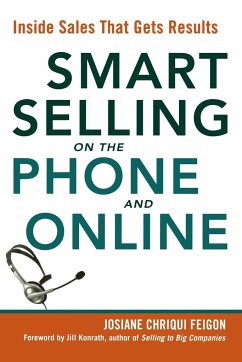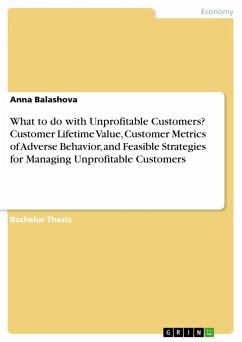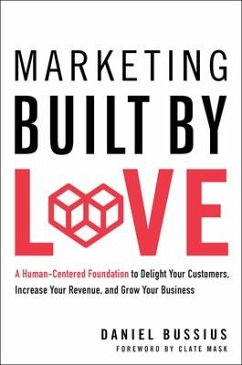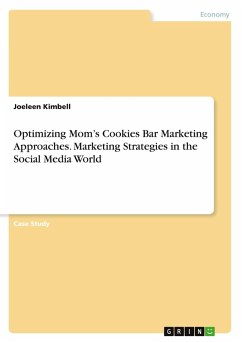
Relationship U-Turn: Approaches to Increase the Value of an Unprofitable Customer
Versandkostenfrei!
Versandfertig in 1-2 Wochen
24,00 €
inkl. MwSt.

PAYBACK Punkte
0 °P sammeln!
Customer relationship management concentrates to a great extent on the profitable customers and how to enhance their profitability. Little insight has been given on how to treat the "wrong" customer. This literature research paper shows that customer profitability and overall firm profitability can be improved when dealing with unprofitable customers. The managerial approaches discussed focus on maintaining the customer relationship. For this reason, this paper differs from the general widespread strategy of termination or "firing" an invaluable customer.First, relationship marketing and "Rela...
Customer relationship management concentrates to a great extent on the profitable customers and how to enhance their profitability. Little insight has been given on how to treat the "wrong" customer. This literature research paper shows that customer profitability and overall firm profitability can be improved when dealing with unprofitable customers. The managerial approaches discussed focus on maintaining the customer relationship. For this reason, this paper differs from the general widespread strategy of termination or "firing" an invaluable customer.
First, relationship marketing and "Relationship U-turn" are introduced in this paper. Second, customer value and methods of measuring customer value are discussed. The body of this paper concentrates on different approaches that try to turn unprofitable customer relationships into profitable ones. Some of the approaches focus on letting the customer take over more of the value chain activities such as self-service. Other approaches look more at the non-monetary value a customer can provide such as positive word-of-mouth. Examples from business-to-business (B2B) and business-to-consumer (B2C) markets are given for each approach and discussed in detail. The paper concludes with ideas for future research and a discussion. It emphasizes that companies need to realize that every customer is an asset that contributes to the value of a firm. However, customers differ in their needs and a company has to tailor its offering to meet these needs. Only when a company takes a more customer-centric view can it be successful, especially in mature markets.
First, relationship marketing and "Relationship U-turn" are introduced in this paper. Second, customer value and methods of measuring customer value are discussed. The body of this paper concentrates on different approaches that try to turn unprofitable customer relationships into profitable ones. Some of the approaches focus on letting the customer take over more of the value chain activities such as self-service. Other approaches look more at the non-monetary value a customer can provide such as positive word-of-mouth. Examples from business-to-business (B2B) and business-to-consumer (B2C) markets are given for each approach and discussed in detail. The paper concludes with ideas for future research and a discussion. It emphasizes that companies need to realize that every customer is an asset that contributes to the value of a firm. However, customers differ in their needs and a company has to tailor its offering to meet these needs. Only when a company takes a more customer-centric view can it be successful, especially in mature markets.













